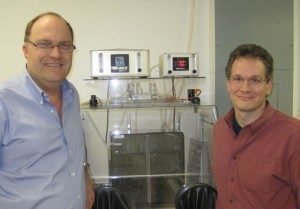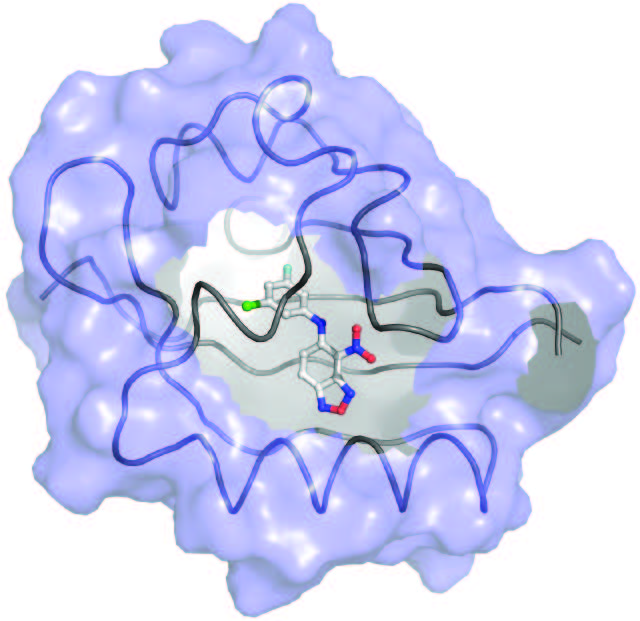TAMEST Blog Series: 2014 O’Donnell Awards Recipients (4th post by Dr. Richard Bruick)
The following post is part of a special blog series highlighting the importance of our O’Donnell Awards program and its impact on the program’s past recipients in medicine, engineering, science, and technology innovation, as well as the importance of scientific research to Texas. The 2014 O’Donnell Awards recipients have each agreed to contribute to the blog series.
The fourth post in this series was written by Dr. Richard Bruick, recipient of the 2014 O’Donnell Award in Medicine. Dr. Bruick’s studies on cellular responses to maintain oxygen and iron homeostasis have helped lay the foundation for the development of small molecule therapeutics to replace erythropoietin as a treatment for anemia, to treat renal cell carcinoma, and to address iron overload disorders.
View Dr. Bruick’s presentation at the TAMEST 2014 Annual Conference.
The 2015 O’Donnell Awards recipients were announced in December through a press release and a video trailer.
Dr. Richard Bruick, Recipient of the 2014 O’Donnell Award in Medicine
By Richard Bruick, Ph.D.
Perhaps the earliest and most frequent advice I’ve received over the years from the chair of our Biochemistry Department, Dr. Steve McKnight, is “make a discovery!” This should not be confused with “publish lots of papers!” as is often intended when well-meaning colleagues coach young faculty preoccupied with launching their careers. Rather, it’s a call to constantly tackle new and challenging problems that may pay off with life-changing advances. There is a great deal of risk associated with this approach. Progress may be slow and hard to measure with no guarantee of success—not exactly ideal selling points when trying to get grant funding.

Drs. Bruick (right) and Gardner (left) have collaborated on the development of small molecules with the potential to treat kidney cancer.
Over a decade ago, my collaborator Kevin Gardner and I embarked on one such project. I had begun my independent career investigating mechanisms that our cells use to sense changes in oxygen availability. This work was highlighted by the identification of key regulatory enzymes that have subsequently been studied by countless groups, and are now the targets of candidate drugs to treat anemia. However, we were intrigued by a potential vulnerability we spied within a different player in the pathway that we hoped could be useful in the context of cancer treatments. This particular target was largely ignored by others in our field, in part because it did not fit into a known class of “druggable” protein targets.
Combining the expertise of UT Southwestern biochemists, structural biologists, and chemists, we sought to develop inhibitors that could exploit our hypothesized liability. Though we gained many insights along the way, the challenges were substantial and progress was often arduous. It wasn’t until 2011—after almost ten years of work—that we achieved the key milestone we aimed for at the outset: a chemical inhibitor that targeted this “undruggable” factor. This technology was licensed to a biotechnology start-up company here in Texas, Peloton Therapeutics, which successfully advanced these early lead molecules into clinical drug candidates for the treatment of kidney cancer. Recently, the U.S. Food and Drug Administration approved the start of a clinical trial, and the first patients are receiving the candidate drug as I write this today. It is an exciting time for all involved and we can’t wait to see whether this off-the-wall idea in which we’ve invested so much time will finally pay off with improved treatments for cancer patients.

Shown is the structure of a small molecule inhibitor bound to a protein implicated as a key driver of tumor progression in kidney cancer.
I was very gratified to receive the 2014 O’Donnell Award in Medicine from The Academy of Medicine, Engineering & Science of Texas (TAMEST). This award recognizes the efforts of dozens of talented individuals over the years as well as Dr. McKnight’s vision and the willingness of UT Southwestern to encourage bold research programs. I firmly believe the Department of Biochemistry at UT Southwestern was central to my success. Our work required significant investments in infrastructure, including shared facilities for small molecule screening, medicinal chemistry, biophysical analysis, and pharmacodynamics characterization. We relied on the excellent labs neighboring ours that span many scientific disciplines and the collegial environment fostered at our institution. As our work matures, new avenues of research continue to open up, allowing us to engage even more investigators to address ongoing opportunities in both clinical and basic research.
The O’Donnell Award validates the patience and trade-offs required to pursue high-risk, long-term objectives and acknowledges the outstanding mentorship I’ve received as well as the terrific colleagues, collaborators and trainees I’ve worked with over the years. The O’Donnell Award provides the freedom to think as creatively as possible, and helps researchers like me all across this state to boldly recruit the next generation of students and fellows to explore new opportunities. I’m thrilled to be in the company of so many outstanding Texas scientists who have been selected for O’Donnell Awards since the program began. Texas is fortunate to have an organization like TAMEST fostering innovation in our state through this unique, life-changing awards program, which will continue to drive innovation in Texas for years to come.
 Dr. Richard Bruick is associate professor of biochemistry and a Michael L. Rosenberg Scholar in Medical Research at The University of Texas Southwestern Medical Center in Dallas.
Dr. Richard Bruick is associate professor of biochemistry and a Michael L. Rosenberg Scholar in Medical Research at The University of Texas Southwestern Medical Center in Dallas.

